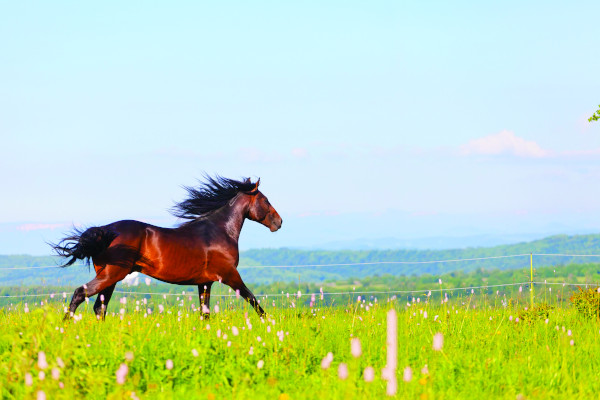
Soft tissue injury in horses is eventually encountered by most equestrians, and there’s often a dilemma for the owner if the cause can’t be easily diagnosed. Treatment typically involves rest, phenylbutazone (bute), and possibly nerve blocks and injections for a mystery lameness.
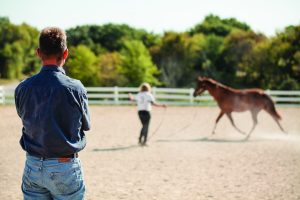
The cause of “mystery lameness” often comes down to misalignment and other soft tissue problems. It could be a tilted pelvis, rotated femur head, or pulled groin from rapidly kicking a fly or throwing a buck in the paddock. Shifts in weather, galloping in the field, sliding in the mud, increased exercise, accidents, and more can all result in muscle pulls, misalignment, or even injury, all of which can affect gait.
So, Your Horse Is Lame
Where lameness becomes a concern is when there is no apparent cause for the irregular gait. The American Association of Equine Practitioners (AAEP) notes, “These abnormalities can be caused by pain in the neck, withers, shoulders, back, loin, hips, legs or feet. Identifying the source of the problem is essential to proper treatment.”
When the veterinarian begins their examination into equine lameness, it follows a diagnostic protocol; medical history, visual examination at rest and motion, a hands-on exam, hoof testing, and joint flexion. If these do not render an apparent reason, then it is common for horses to trailer to a veterinary clinic for more in-depth testing, ultrasounds and more. These are all regular tests in determining lameness.
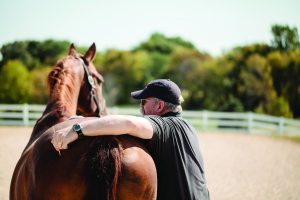
However, many times owners will be concerned that the veterinarian, osteopath, or the farrier find different sensitive areas that may contribute. The actual cause is unknown, and the lameness continues or, worse, progresses.
“In the world of equine lameness, you are lucky if your horse has a condition that can be easily diagnosed and treated,” says Penny Rochelle, DVM, CVA, CVSMT. “However, many cases of poor performance are not that simple to identify. Some of the more challenging cases can be attributed to soft tissue injuries in obscure anatomical locations—for example, in stabilizing structures of the spine and upper body. Sacroiliac ligament strains can be difficult to localize and visualize but are important to diagnose if you want the performance to improve.”
Everything Works Together
Since the body itself is a connected whole, an integrative approach is essential, meaning a combination of science-based modern medicine and complementary therapies. The fascia, which encases the entire body, is a sheet of connective tissue that covers or binds together body structures, such as muscles. And the central nervous system provides communication throughout the musculoskeletal system, which acts as a well-oiled machine, intertwining, stabilizing, and working together.
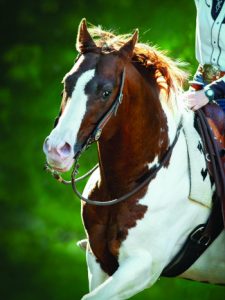
For example, when a muscle is tight from increased exercise, it pulls on the associated skeletal structures it holds in place, creating misalignment, which then leads to compensation. Alternately, a fall or slip in mud or snow may push a rib or the pelvis out of alignment. As a result, this requires the associated muscles to move to stabilize the area, either pulling or tensing as needed to provide balance.
“Most of the treatment for lameness tends to pain management,” says Madelyn Rauch, DC, a human and equine chiropractor certified by the American Veterinary Chiropractic Association. “If we never correct the misalignment in [the horse’s] body, they will be slower to recover and easily injure the area again due to compensation.”
For example, hocks often show limited or temporary improvement with corticosteroid injections, which are commonly used by veterinarians as a method to diagnose or rule out problems in that area. However, the hocks are the endpoint of the hamstring muscles.
As a result, the tighter the hamstrings, the more pressure there is on the hocks. While injections may be beneficial, it may only be temporary unless the hamstrings are relieved of tension. The goal should be to remove the compensation in the soft tissue, correct skeletal misalignments, and allow the body to achieve balance once again.
A Case Study
Recently, Linda Snyder followed proper protocol when her mature Thoroughbred, Cooper, presented with mystery lameness. The vet was first contacted and determined Cooper’s left stifle was weak, potentially causing the sudden gait change and head bobbing.
Snyder followed up with a chiropractor, combined with sports massage to address Cooper’s entire musculoskeletal structure. In reviewing the body as a whole, the therapists noted his pelvis was tilted forward, pulling and tightening the glutes and hamstrings, groin and stifle. Was the stifle the cause for lameness, as determined by the veterinarian? Perhaps. The stifle was involved, but so were many other areas that could account for the change in gait.
“Instead of managing the pain, we can use it as a powerful indicator to show weakness and misalignment throughout the horse’s system,” says Rauch. “When a horse has to compensate for an injury, his body quickly shows us where the injured area carries a larger load than necessary. For example, if it looks like the right stifle is injured suddenly, the horse will have to shift off that right side of the pelvis to carry a heavier load on the left hind.
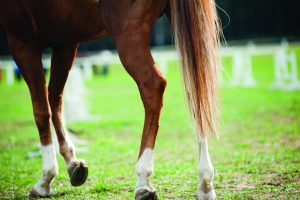
“However, if he has lumbar rotation to the right, that puts the extra pressure on the right stifle, and you will find more weakness through the left side of his back and hind end. In the end, if we can rule out overuse due to compensation in the horse’s body, it’s much more likely the injury will not reoccur.”
Taking an Integrative Approach
While stall rest may be required to heal lameness due to specific injury, some limited movement to increase blood circulation and speed healing is needed. Often, both time and anti-inflammatories are an essential part of the process.
Going a step further and addressing the root cause of soft tissue injury in horses can result in removing compensation, avoiding re-injury, and strengthening the area of weakness.
“Treatments for soft-tissue injuries vary depending on the case, but success depends not only on relieving inflammation and allowing time to heal, but also strengthening and conditioning to re-stabilize the area,” says Rochelle.
Veterinarians working in collaboration with specialists, such as bodyworkers, chiropractors, farriers, and dentists result in a stronger horse long-term. It’s important to note that the AAEP does look to alternative therapies as an option.
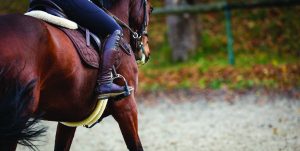
“Complementary therapies like acupuncture, chiropractic, massage, and other treatments may have additional value in some cases but are not a substitute for a thorough lameness evaluation,” writes Doug Thal, DVM, for the AAEP website.
Viewing soft tissue injury in horses as a possible cause of lameness allows you to focus on your horse’s healing, improving his strength, and preventing further injury. Treating the injury with time and relieving inflammation is a necessary part of healing lameness. However, progressive or mystery lameness may often be solved using an integrative approach.
This article about soft tissue injury in horses appeared in the April 2021 issue of Horse Illustrated magazine. Click here to subscribe!





